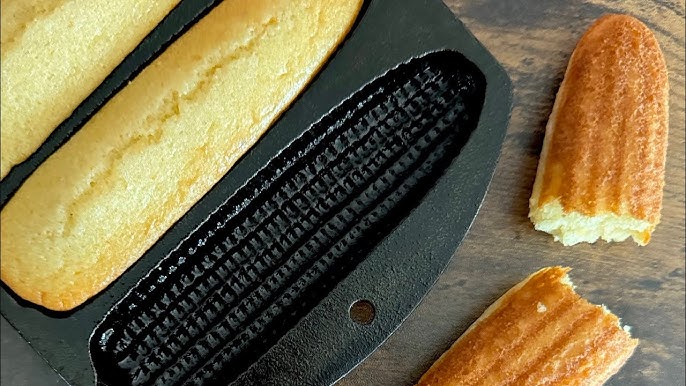Cornbread is a beloved dish in many households, celebrated for its warm, crispy exterior and soft, fluffy interior. Achieving the perfect cornbread involves more than just a great recipeit requires the right tools. A cornbread pan is crucial for ensuring your cornbread is cooked evenly and has the perfect texture. If you’ve ever wondered how to use a cornbread pan for perfect results, you’re in the right place. In this guide, well explore the ins and outs of using this essential kitchen tool, guaranteeing your cornbread turns out perfectly every time.

Understanding Cornbread Pans
Before delving into specifics, it’s vital to understand what makes a cornbread pan unique. Cornbread pans come in various materials, including cast iron, aluminum, and silicone, each offering distinct advantages. However, the use of a cast iron pan is often preferred by many enthusiasts due to its ability to distribute heat evenly. For more insight into various kitchen tools, check out this guide on grill features.
Types of Cornbread Pans
A brief overview of types can help you decide the best one for your needs:
- Cast Iron Pans: Excellent for even heat distribution and flavor. Check more about pan differences here.
- Aluminum Pans: Lightweight and affordable, yet may not distribute heat as evenly.
- Silicone Pans: Non-stick and flexible, making removal easier but are less traditional.
The Process of Using a Cornbread Pan
Using a cornbread pan correctly involves several steps. Mastering each step can ensure your cornbread is not just good, but exceptional.
Choosing the Right Recipe
The first step is finding a recipe that suits your taste. Whether you like your cornbread sweet or savory, ensure it complements the meal you’re preparing. Some popular recipes include those found on super moist cornbread recipes.
Preheating the Pan
Preheating your pan is crucial. This step ensures your cornbread will have a crispy crust while maintaining a moist interior. Place your pan in the oven while it preheats to the desired temperature.
Greasing the Pan
Properly greasing your pan prevents the cornbread from sticking. Use oil or butter to coat the pan thoroughly before pouring in the batter. The choice between oil and butter can also impact flavor and texture.
Pouring the Batter
Once your pan is preheated and greased, carefully pour the batter into the pan. The batter should sizzle slightly when it makes contact with the hot pan.
Baking to Perfection
Every oven varies, so it’s important to keep an eye on your cornbread as it bakes. A good guideline is to bake until the top is golden brown and a toothpick inserted into the center comes out clean. For additional guidance, visit this beginners guide.
Cooling Down
Once baked, let your cornbread rest before serving. This cooling period allows flavors to set and makes for cleaner slices.
Serving Suggestions
Cornbread is incredibly versatile. It pairs well with a variety of dishes, from chili to fried chicken. Cut into squares or wedges and serve as part of a hearty meal.
Cleaning and Maintaining Your Cornbread Pan
Proper maintenance of your cornbread pan ensures longevity and optimal performance. For cast iron pans, avoid soap and use hot water and a brush instead. Keep your pan seasoned with a light layer of oil to prevent rust.
Conclusion
Mastering the art of using a cornbread pan is a rewarding endeavor, turning a classic side dish into a centerpiece. With the right techniques, your cornbread will not only taste better but also have the perfect texture. Whether a seasoned chef or a home cook, utilizing these tips will help you bake cornbread that everyone will talk about.

FAQs
Can I use any pan for cornbread?
While you can use other pans, using a dedicated cornbread pan, especially cast iron, provides the best results.
Why is my cornbread crumbling?
Overbaking or not using enough fat in the recipe can lead to crumbly cornbread.
How do I prevent cornbread from sticking?
Ensure the pan is well-greased and properly preheated before adding the batter.
This article contains affiliate links. We may earn a commission at no extra cost to you.

